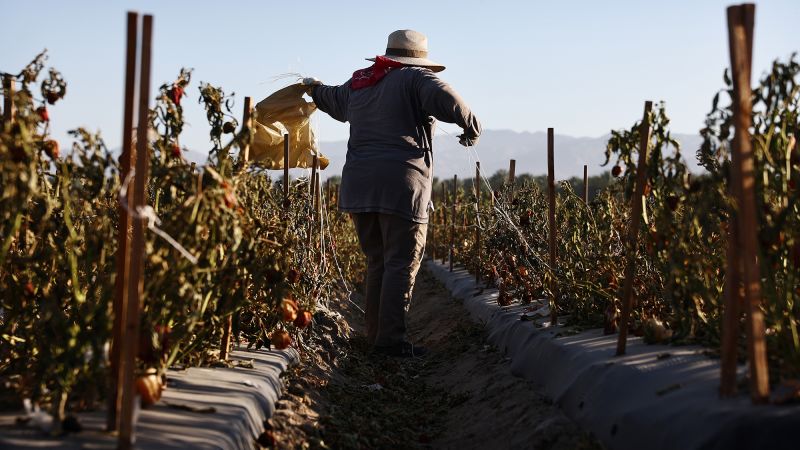In the United States, inflation has been decreasing after reaching a four-decade high, but extreme heat in the summer continues to be a problem. The country has experienced one of the hottest summers on record, with last week marking the hottest day ever recorded. This heat is not only affecting consumers financially through higher electricity bills, but it is also impacting farmers and the cost of fruits and vegetables. Despite a trend of lower prices for fruits and vegetables over the past year, farmers are now facing higher growing costs due to the extreme heat.
Tom Avinelis, a farmer who owns organic farms growing blueberries and citrus fruits in California and Oregon, has seen his produce shrivel due to near-record-breaking heat waves. This has resulted in less harvestable produce, leading to a decrease in revenue potential. While consumers may not see significant price increases for seasonal fruits like blueberries this summer due to pre-existing contracts with distributors and retailers, the long-term impact of extreme heat on production and supply dynamics is concerning.
As temperatures continue to rise, farmers like Avinelis are facing challenges in production, leading to the need for higher prices to cover the expenses of adapting to extreme heat. Corn, one of the top-produced crops in the US, is also suffering losses from heat, with growers projected to lose significant revenue annually. The consequences of these losses could include farm closures and higher prices for food and livestock feed, impacting both farmers and consumers.
Researchers from the University of Waterloo and Mohamed bin Zayed University of Artificial Intelligence have found that temperatures three degrees above historic averages could reduce strawberry yields by as much as 40%. This analysis was prompted by a supermarket chain in Canada seeking software to predict produce prices, with a focus on strawberries due to their challenging forecasting. Farmers and policymakers can use these findings to implement effective climate change adaptation strategies in strawberry production and other high-value agricultural crops.
Increasing costs due to climate change have led many farmers to shift their operations indoors to better control environmental factors. This shift comes with significant costs, which could contribute to higher prices for consumers. Henry Gordon-Smith, CEO of Agritecture, notes that while some growers have maintained output, it has come at a higher cost due to factors such as increased water usage and labor. Adaptive strategies in agriculture, such as using sensors and artificial intelligence tools to track weather and make predictions, are needed to help farmers survive heat waves.
The urgency for adaptive strategies in agriculture is evident as the effects of climate change continue to impact farmers and consumers. Farmers facing extreme heat may benefit from strategies such as shifting operations indoors or using technology to monitor weather and make informed decisions. The challenges posed by heat waves emphasize the need for proactive measures to mitigate the effects of climate change on agriculture and ensure a sustainable food supply for the future.


